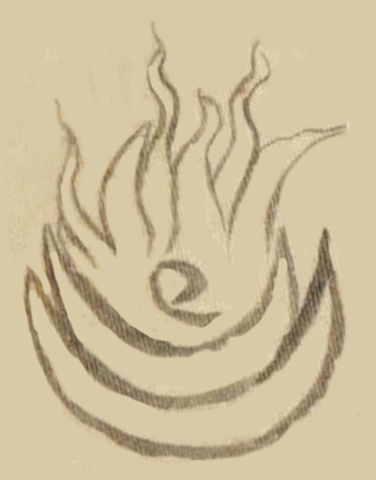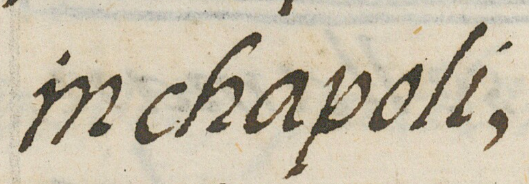Tlemaco (Azca14)
This black-line drawing of the simplex glyph for the place name Tlemaco shows a frontal view of a fire (tletl) in the doubled spoon of an incense burner (tlemaitl). The handle of the burner is not visible. The fire has seven wavy flames reaching upward and a small coil in the middle. The locative suffix -co (in or on) is implicit.
Stephanie Wood
The gloss explains that the Mexica founded this place. It was a site established during a pause in the migration that would end up founding Mexico-Tenochtitlan. Tlemaco is modern-day San Jerónimo Tlamaco (sometimes also still spelled Tlemaco), in Hidalgo. It has a sixteenth-century church with an open chapel.
Stephanie Wood
tlemaco motlallico in mexica
Tlamaco omotlalico in Mexica.
Stephanie Wood
post-1550, possibly from the early seventeenth century.
Jeff Haskett-Wood
fuego, incenso, incensarios, sahumadores, pueblos, topónimos, nombres de lugares

tlemaco, in an incense spoon, https://nahuatl.wired-humanities.org/content/tlemaco
tle(tl), fire, https://nahuatl.wired-humanities.org/content/tletl
ma(itl), hand, https://nahuatl.wired-humanities.org/content/maitl
-co (locative suffix), in, on, or at, https://nahuatl.wired-humanities.org/content/co
En el Sahumador, o En el Incensario
Stephanie Wood
The Codex Azcatitlan is also known as the Histoire mexicaine, [Manuscrit] Mexicain 59–64. It is housed in the Bibliothèque Nationale de France, and hosted on line by the World Digital Library and the Library of Congress, which is “unaware of any copyright or other restrictions in the World Digital Library Collection.”
https://www.loc.gov/resource/gdcwdl.wdl_15280/?sp=14&st=image
The Library of Congress is “unaware of any copyright or other restrictions in the World Digital Library Collection.” But please cite Bibliothèque Nationale de France and this Visual Lexicon of Aztec Hieroglyphs.




